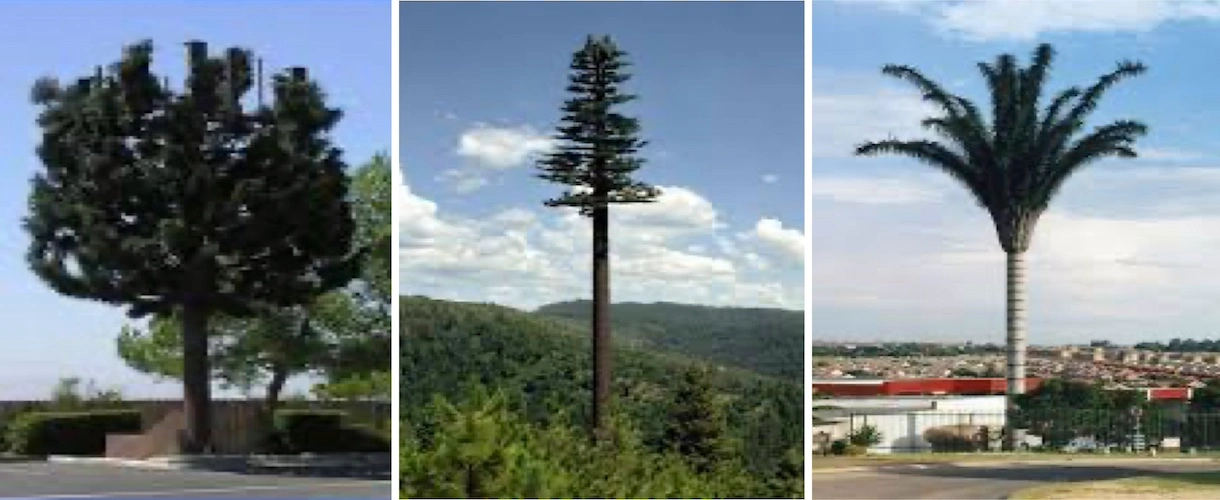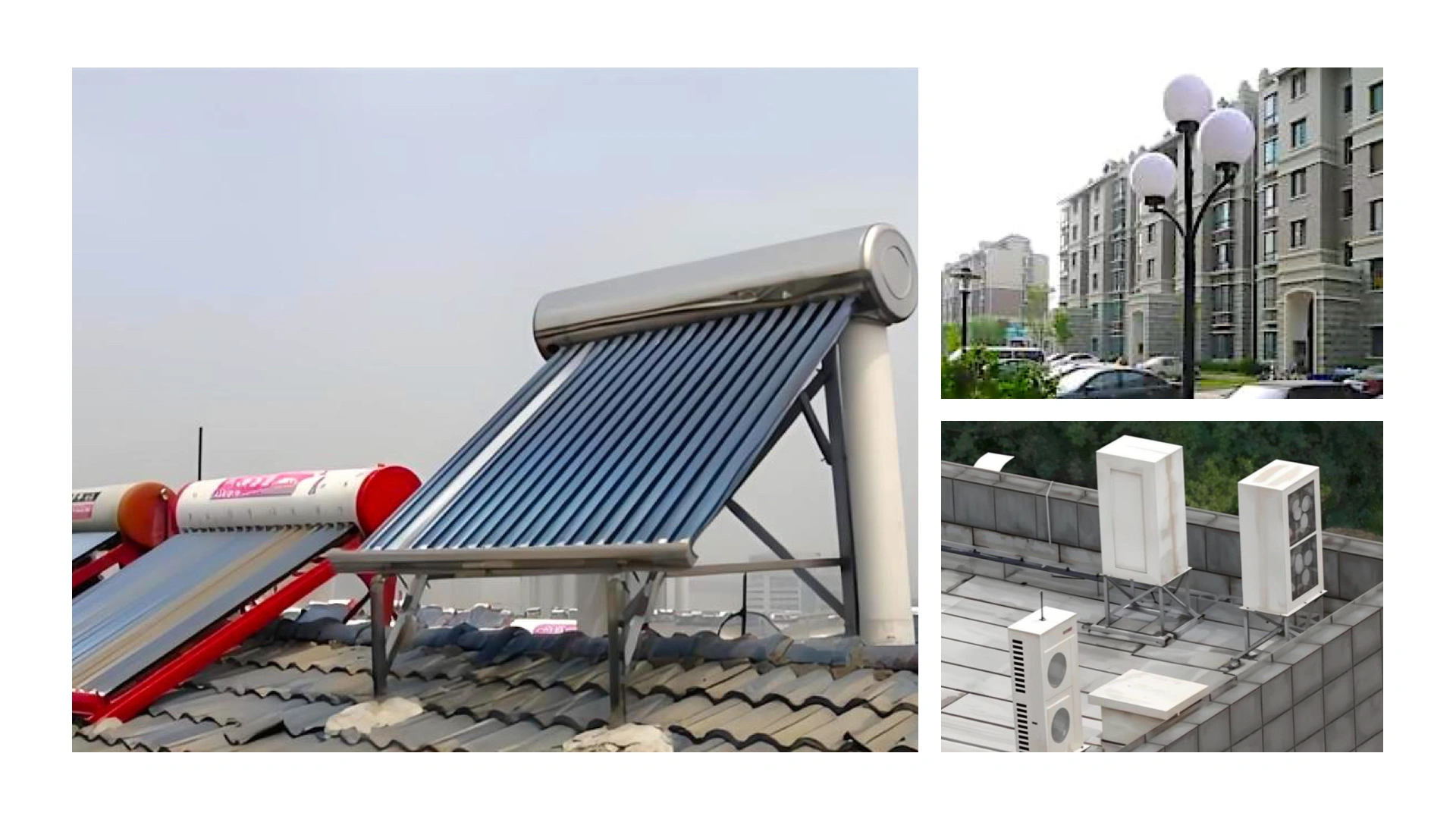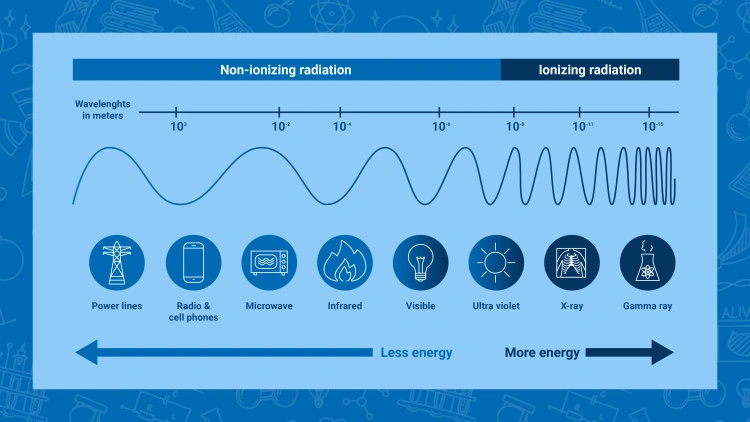How Many Trees in China Are Secretly Base Stations?
Can you spot these masters of disguise—the telecommunications base stations—hiding around you? Often blending seamlessly into their surroundings, they strive to merge with the environment, exuding a quiet, composed presence.

The first time you encounter them, you might simply walk past—unless you let go of your usual perceptions and find the right angle to observe them.
Imagine running your hand over what appears to be tree bark, only to feel a metallic texture. Look up, and you might see a few antennas poking out from the green canopy, twenty meters above. Then you begin to realize that this ‘tree’ is far more than it appears. Beyond the range of carbon-based life forms, it seems like Transformers had already set up an ambush on Earth, complete with a fully operational outpost for communication.
Clearly, the cost of such disguises is not low, as designers have abandoned the straightforward approach in favor of exploring more biomimetic possibilities. Not merely financial, there is an environmental cost as well, as the materials used in the construction of these base stations must be durable and capable of withstanding the elements while maintaining their disguise.
So, why do telecom base stations need to “disguise” themselves?
Actually, this is an open secret in the telecom industry. Part of the reason for these disguises is aesthetic—designed to blend in with the environment—but another reason is simply to remain hidden from view.
The concern over the potential health impacts of electromagnetic fields (EMFs) has been a sensitive topic for many communities. Initially, when communication base stations were first being built, they were not camouflaged. People living in cities would often come across some telecom base stations. The citizens believed that these base stations would emit radiation, which could cause health problems.
Local governments and telecom companies have had to navigate this challenge through dialogue and education. Campaigns have been launched to inform residents about the safety of these installations and the strict regulations that control their emissions. Nevertheless, the fear of radiation and the desire for unobstructed views have led to the continued use of camouflage.
To minimize their impact on the environment and alleviate public concern, many telecom base stations are camouflaged as familiar structures, such as trees, solar heaters, and air conditioning units, including but not limited to streetlights, chimneys, drainage pipes, and even lighthouses.

A maintenance worker described the situation in some neighborhoods as feeling like ‘we’re sneaking around’.
“Once the base stations are set up, people start to complain about radiation. But if we take it down, they would complain about losing the signal. It’s definitely not feasible to keep disassembling and reassembling. So camouflage becomes the only solution.”
In fact, electromagnetic radiation is distinct from ionizing radiation, and the intensity of electromagnetic radiation emitted by communication devices is significantly lower than that emitted by your hair dryer. Moreover, the Earth naturally generates a substantial magnetic field. When considering the primary source of radiation, the Sun should be regarded as the dominant contributor.
 Non-ionizing and ionizing radiation have different wavelength, which directly relate to its energy. (Infographic: Adriana Vargas/IAEA).
Non-ionizing and ionizing radiation have different wavelength, which directly relate to its energy. (Infographic: Adriana Vargas/IAEA).
There’s an old saying in the telecommunications industry: where there are people, there are telecom towers. According to industry insiders, if your phone has a signal, you’re probably much closer to one of these “masters of disguise” than you think. People have reported spotting them in places as diverse as cemetery paths, temples, and botanical gardens—essentially, they seem to be everywhere you turn. Like a scene straight out of a spy movie, where the next base station could take any form, and you’d never see it coming.
Unbeknownst to many, these camouflaged base stations play a pivotal role in maintaining the seamless connectivity that has become a hallmark of modern life in China. The future may also bring changes in public perception. As more people become aware of the vital role these stations play and the stringent safety standards they adhere to, the need for such elaborate disguises may diminish. Until then, these masters of disguise will continue to stand watch over our digital connectivity, often unnoticed and always indispensable.
The next time you take a walk through the park or gaze out over a city skyline, take a moment to consider the possibility that the tree or the chimney you see might be silently working to keep you connected. It’s a small reminder of the incredible infrastructure that underpins our modern world and the lengths we go to in order to maintain it.
Editor: Anymuoons



